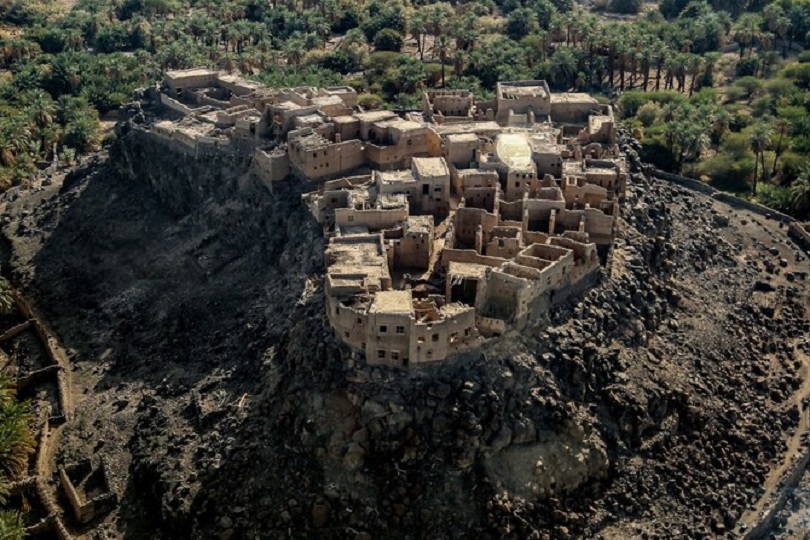
Paris- The discovery of a 4,400-year-old fortified town hidden in an oasis in modern-day Saudi Arabia reveals how life at the time was slowly changing from a nomadic to an urban existence, archaeologists said on Wednesday.
The remains of the town, dubbed Al-Natah, were long concealed by the walled oasis of Khaybar, a green and fertile speck surrounded by desert in the northwest of the Arabian Peninsula.
Archaeologists discovered the site near the city of Al-‘Ula in the Hejaz region of western Saudi Arabia. The settlement covered about 3.7 acres (1.5 hectares), “including a central district and nearby residential district surrounded by protective ramparts,” the researchers said in a statement.
But the town, which was occupied starting around 2400 B.C., was small, with a population of only around 500 people, the team noted in a study, published Wednesday (Oct. 30) in the journal PLOS One.
The residential area had a large amount of pottery and grinding stones, as well as the remains of at least 50 dwellings that may have been made of earthen materials. The central area had two buildings that may have been used as administrative areas, the team wrote in the paper. In the western part of the central area, a necropolis was found. It has large and high circular tombs that archaeologists call “stepped tower tombs.”
No examples of writing have been found so far at the site, study lead author Guillaume Charloux, an archaeologist at the French National Center for Scientific Research (CNRS), was quoted as saying by Live Science. Researchers have unearthed only a few traces of cereals, but based on finds at other sites it’s likely that al-Natah’s people grew crops near the site, Charloux said.
The town and its nearby areas were surrounded by a 9-mile-long (14.5 kilometers) wall, which would have provided defense from raids carried out by nomads, the team wrote in an earlier paper published in the Journal of Archaeological Science: Reports.
The town was abandoned sometime between 1500 and 1300 B.C., but researchers aren’t sure why this happened. “It’s a pertinent question that I can’t really answer at the moment,” Charloux said, noting that “we have very few clues about the last phase of occupation.”
These discoveries reveal a process of “slow urbanism” during the transition between nomadic and more settled village life, the study said.
For example, fortified oases could have been in contact with each other in an area still largely populated by pastoral nomadic groups. Such exchanges could have even laid the foundations for the “incense route” which saw spices, frankincense and myrrh traded from southern Arabia to the Mediterranean.
Al-Natah was still small compared to cities in Mesopotamia or Egypt during the period.
But in these vast expanses of desert, it appears there was “another path toward urbanization” than such city-states, one “more modest, much slower, and quite specific to the northwest of Arabia,” Charloux said.
Follow this link to join our WhatsApp group: Join Now
Be Part of Quality Journalism |
Quality journalism takes a lot of time, money and hard work to produce and despite all the hardships we still do it. Our reporters and editors are working overtime in Kashmir and beyond to cover what you care about, break big stories, and expose injustices that can change lives. Today more people are reading Kashmir Observer than ever, but only a handful are paying while advertising revenues are falling fast. |
| ACT NOW |
| MONTHLY | Rs 100 | |
| YEARLY | Rs 1000 | |
| LIFETIME | Rs 10000 | |










